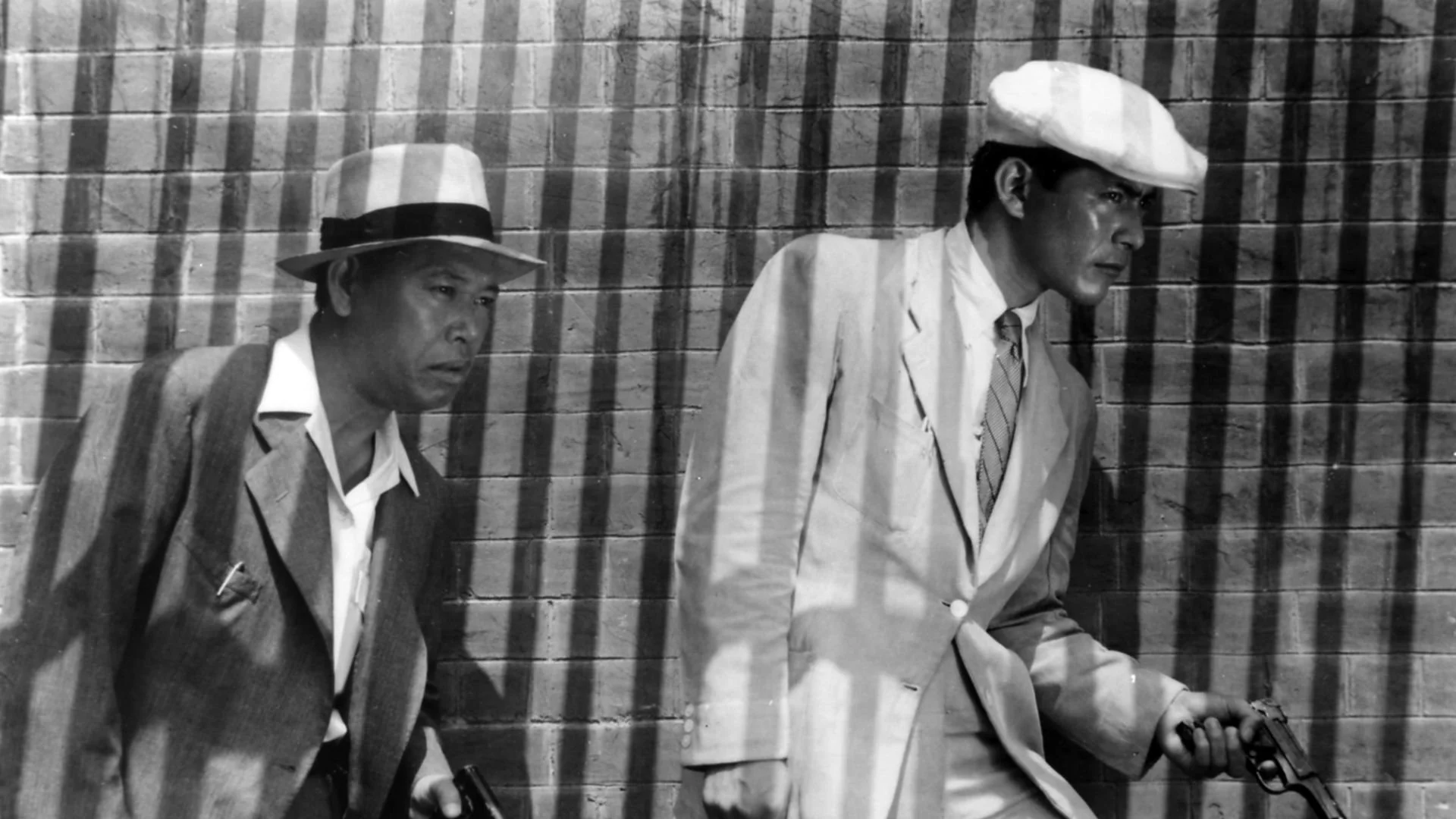Blind Spot: Stray Dog (1949)
Blind Spot is when a member of Unlaced ticks a film off the list of a beloved director’s oeuvre that they somehow haven’t gotten around to watching yet. My pick was Akira Kurosawa’s Stray Dog.
Takashi Shimura, left, Toshiro Mifune, right
Stray Dog was not well-liked by it’s director. Intending to make a detective story in the manner of Georges Simenon, Kurosawa, at the suggestion of his co-writer Ryuzo Kikushima (who would collaborate on some of Kurosawa’s most beloved - and capital E Entertaining - works like High and Low, The Hidden Fortress, and Throne of Blood) went to the Tokyo Metropolitan Police Department to pick out some cases they could use as material. He found one about a detective who lost his gun. What is interesting about Stray Dog is it was built off a novel Kurosawa himself wrote, rather than a traditional shooting script. It might explain why he wasn’t so fond of the finished product- to him, it was like any adaptation of literature; doomed in its imperfection. To my eyes, it’s a masterpiece.
“I wanted to make a film in the manner of Simenon, but I failed. Everyone likes the picture but I don’t. It is just too technical. All that technique and not a single thought in it. Shimura is quite good but I didn’t see very deeply into his character- nor anyone else for that matter. If I saw into anyone at all, it was the murderer” - A.K
Toshiro Mifune plays green, newly-promoted detective Murakami. One summer’s day his pistol is stolen on a crowded, airless bus. This is a source of massive shame for Murakami, who seems almost traumatised by the sudden loss of his Colt- his identity, perhaps- although when he reports this situation to his superiors they merely laugh and amusedly task him with recovering it. What follows is a disorienting and subjective sequence of Murukami undercover investigating the slums and seedy downtown black markets of post-war Tokyo, approaching suspicious characters on the streets who might know something or someone. Kurosawa used some documentary footage to flesh this sequence out, and everywhere there are people: people smoking, people laying in the heat, people fanning themselves, people sweating, all of them with shirts clinging to their skin, overwhelmed and fatigued. Mifune’s forehead might be endlessly plastered in sweat, but his eyes are wide open during this sequence. Kurosawa edits all this together languidly, using dissolves, fades and double exposure over the course of a full ten minutes, achieving the kind of feverish rhythm you might have encountered in something like Last Year at Marienbad. Long-time Kurosawa student Donald Richie said that this sequence is “so long that one expects the summer to be over and autumn begun by the time it finally stops”.
The film might be notable for presaging the buddy-cop genre, as it’s when Murakami pairs up with jaded older detective Sato (Kurosawa mainstay Takashi Shimura) that the film really comes alive. In a middle sequence, after Murakami and Sato have investigated more slum like living quarters and hovels, looking for the man who stole a simple Colt, Sato says, rather cryptically, that there’s one last stop he'd like to make. They enter a small ramshackle looking house (“a glorified shack”, Sato calls it”), and Sato’s children rush up to meet him (destitute, but with the widest smiles). His wife makes them dinner and they sit out in the night air and bond over mutual things and argue over others, a pre and post-war mindset duking it out over rationed beer. “They say there’s no such thing as a bad man. Only bad situations”, to which Sato replies, “thinking like that will get you nowhere as a cop”. Something as simple as this scene is Kurosawa at his cleanest and most timeless. It’s unclear how much control over their lot in life these two detectives can wrestle for themselves, never mind the beggar’s and thieves they’ll go up against, and sat under the starless night air of Tokyo on the eve of its industrialisation, they can only wonder.
But it’s in the films haunted atmosphere and visual motifs that Stray Dog cements itself as a Kurosawa masterclass on par with 1967’s brilliant High and Low: by leaning into his cast’s generational talent and good old-fashioned mise-en-scene, Kurosawa never had to write a surprising or cerebral mystery climax in the manner of Simenon or Agatha Christie; just an expressive one. It’s expressed in the locations: the derelict apartments and hovels of the criminals they investigate. It’s expressed in the compositions, which places the city’s denizens as victims of towering, shadowy structures (the American Occupation? The smog of poverty?) And it’s expressed in the films haunting summation, where cop and robber come face to face and smart at their own reflections.
Other notes:
-According to David A. Conrad, a woman from the ASPCA (American Society for the Prevention of Cruelty to Animals) saw the film and decided- apparently without evidence- that Kurosawa had infected a dog from the film with rabies (it is panting in the summer heat in that foreboding opening shot). He had to write a letter to the officials of the American Occupation at the time denying the allegation, and was so pissed off that he had never felt, quote "a stronger sense of regret over Japan's losing the war."
-Kurosawa intended to shoot in four rungs of Tokyo: Asukasa, Ueno, Shinjuku, and Shibuya, each representing a social heirarchy- an idea he may have lifted from De Sica’s The Bicycle Thieves, a film he was indebted to- but the typhoons of 1949 made shooting in Shinjuku and Shibuya impossible; as Donald Richie states, “as social allegory, Stray Dog stays in hell”. All the better.





